

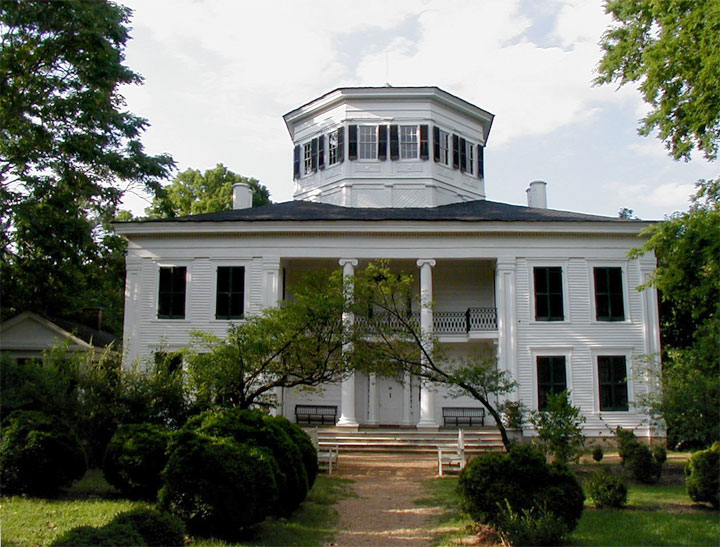
Deserted and desolate for almost fifty years, Waverley Plantation Mansion was first reborn as a home, then as a Mississippi landmark.
Waverley Plantation Mansion, built by Colonel George Hampton Young in the 1850s near the Tombigbee River between Columbus and West Point, Mississippi, was occupied by the Young family until 1913, when the house was closed up with the death of son William Young. Waverley remained unoccupied for almost 50 years, until fate brought it to the attention of Donna and Robert Snow of Philadelphia, Mississippi. Robert, an antique dealer, relates their first visit to Waverley:
“As we came around a huge oak tree, we stopped dead in our tracks—absolutely breathless, mesmerized. There was the house, rising up out of the jungle, four stories high with the dome set against the bluest sky. Vines clung to the house and swayed in the breeze. The porch floor had collapsed and the marble steps were scattered in the yard. We scarcely spoke.”
The Snows bought the property from the Young estate in 1962 and the restoration of Waverley Plantation Mansion was begun, a labor of love that continues to this day.
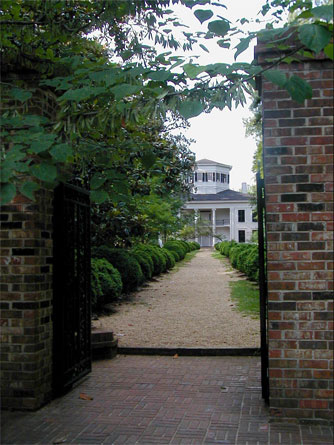
The visitor’s first glimpse of Waverley through the entrance gate (above) only hints at the marvelous treasures to be found behind the front door. This Greek Revival home is a National Historic Landmark, a National Restoration Award winner, and is listed on the National Register of Historic Places.
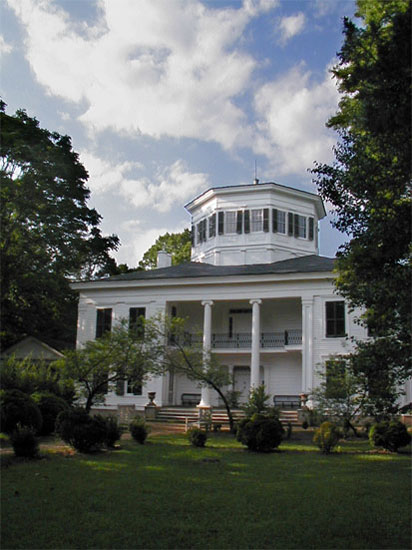
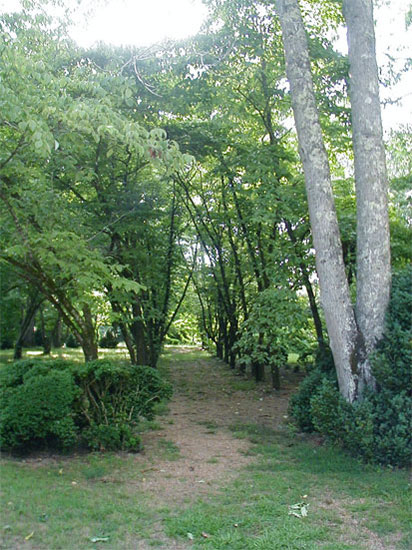
Approaching the house, the grandeur of the landscaping becomes apparent. The boxwood bushes are all cuttings from the original garden plants.
Colonel Young's daughter, Lucy, wrote: "An especial attraction to my . . . father's home was the large and beautifully kept garden in front of the home. It was planned by a Landscape gardener, laid off in small beds, and winding walks, in the fashion of the time, and planted with a great variety and profusion of shrubs and flowers."
(from Waverley: Memories of a Mississippi Plantation by Heath Childs — 2000)
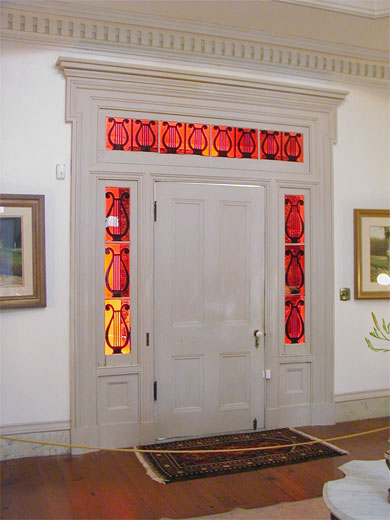
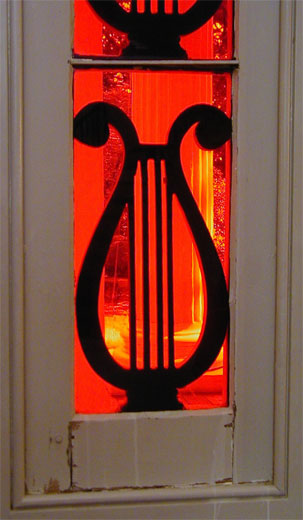
Gold, melted during production into the glass of the window found around the front door, resulted in a red transparent pane when backlighted, otherwise it appears black. The lyre design implied a musical leaning in the family.
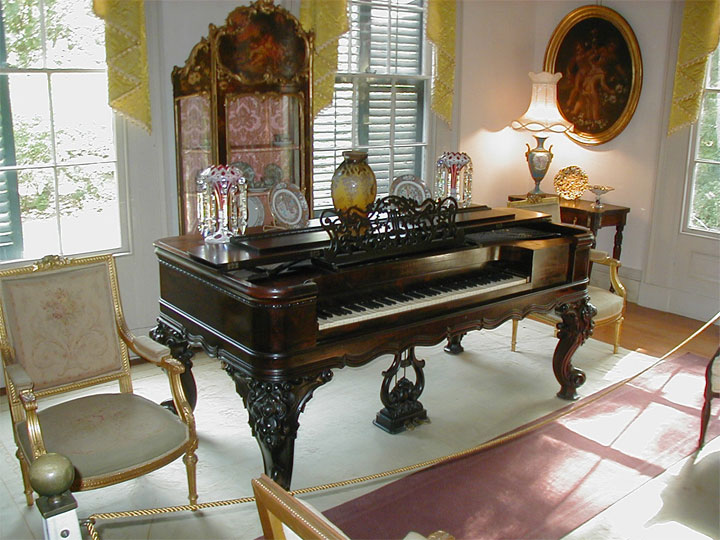
The formal parlor (above), designed to showcase the Young family’s wealth and standing, was the last room to be restored by the Snows, sometime around 1990. The 1861 hand-carved rosewood Steinway piano, one of only eight made, has an off-center keyboard, not a very popular arrangement.
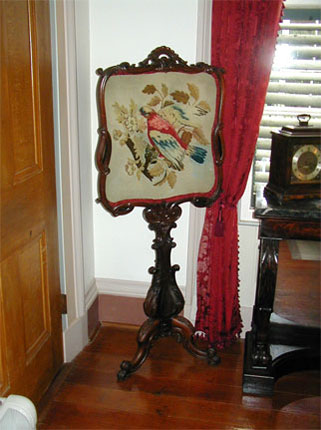
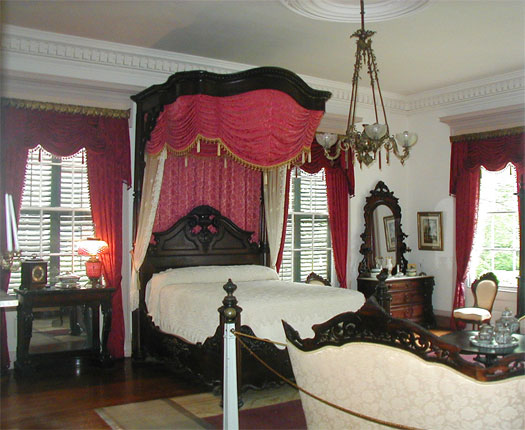
The “master” bedroom (above) on the first floor was meant for guests only, as the owner of the house had his room on the second floor, as did the rest of the family. Other rooms on the ground floor (below) include the parlor (left), the library (center), and the dining room (right).
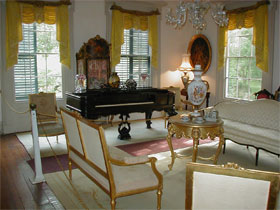


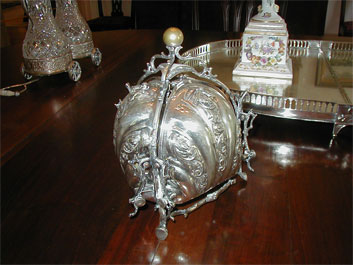
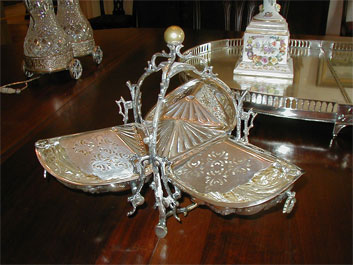
A most unusual item on the dining room table is this silver crumpet box (above, shown closed on the left and open on the right). Hot coals placed in the bottom compartment kept the crumpets warm. It can be seen closed on the near side of the table in the photograph of the dining room.
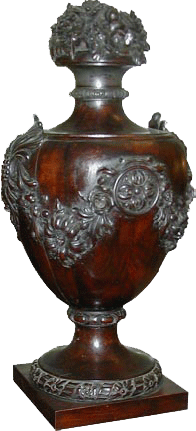
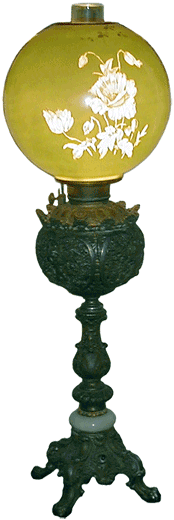

A fruit cooler (left), carved from a solid piece of rosewood and lined with zinc under an air-tight lid, held ice-chilled fruit for party guests.
An Emile Gallé Art Nouveau vase from the late 19th Century (right) glows with captured sunlight.
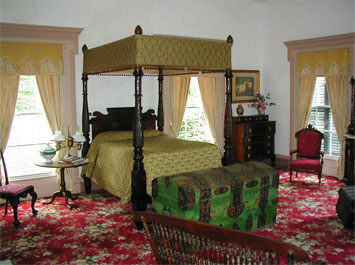
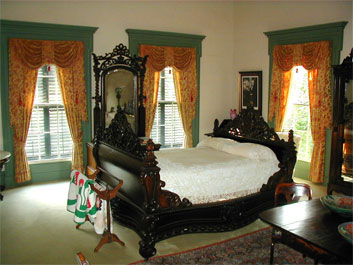
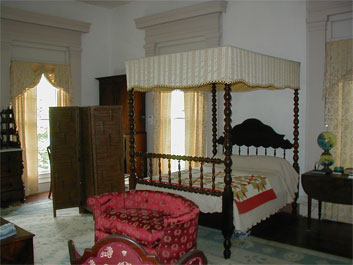
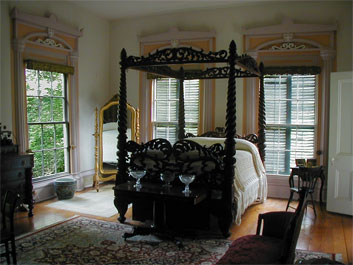
The four bedrooms on the second floor are shown above. As Waverley is still a private home in every respect, the furnishings and appointments are used by the family members on a daily basis.
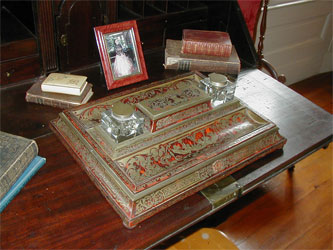

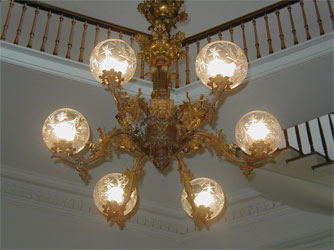
Decorative details abound throughout the house, found both high and low, from a writing set on a desk in the parlor (above, left), to the details on the leg of the library's French Empire desk that reflects the influence following Napolean's Egyptian campaigns at the end of the 18th Century, to the original chandelier that hangs from the dome of the rotunda (above, right and below).
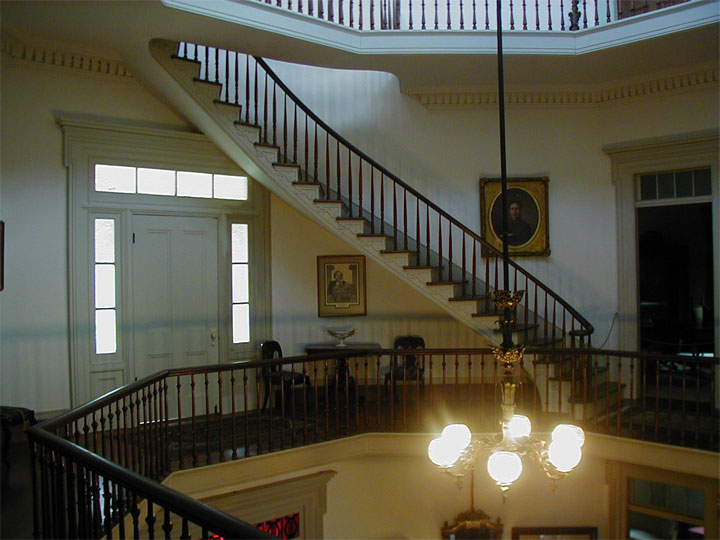
Eight months were required to restore the rotunda alone. Of the 718 spindles lining the stairs, only three required replacement.
The self-supporting stairway leading to the attic (above and below, center) is where the purported child ghost of Waverley has been seen.
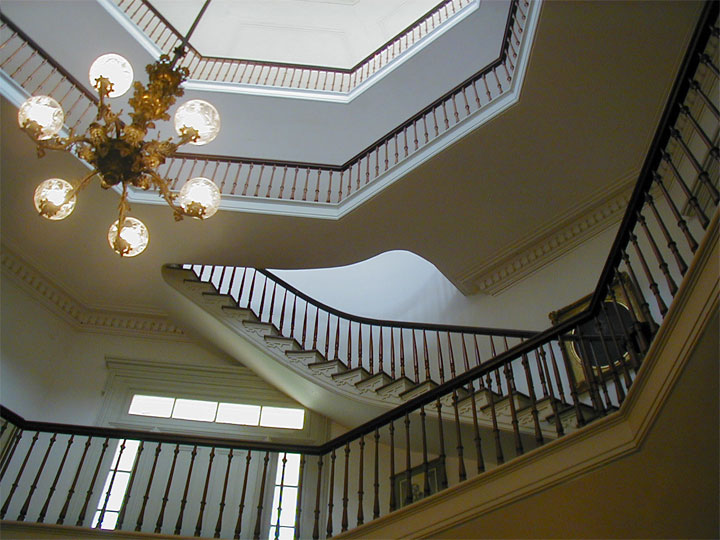
Enormously loud crashes have been heard in the house yet nothing found disturbed. Doors heard slamming shut but none found closed.
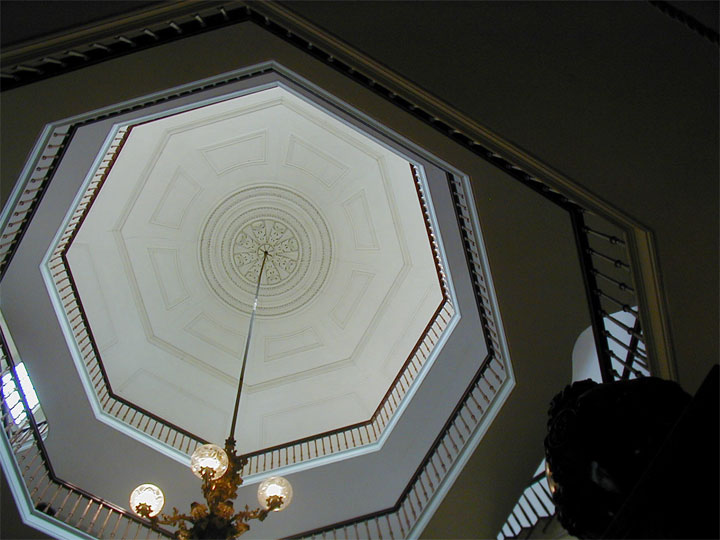
The dome at the top of the rotunda (above) is capped by a high cupola (below).
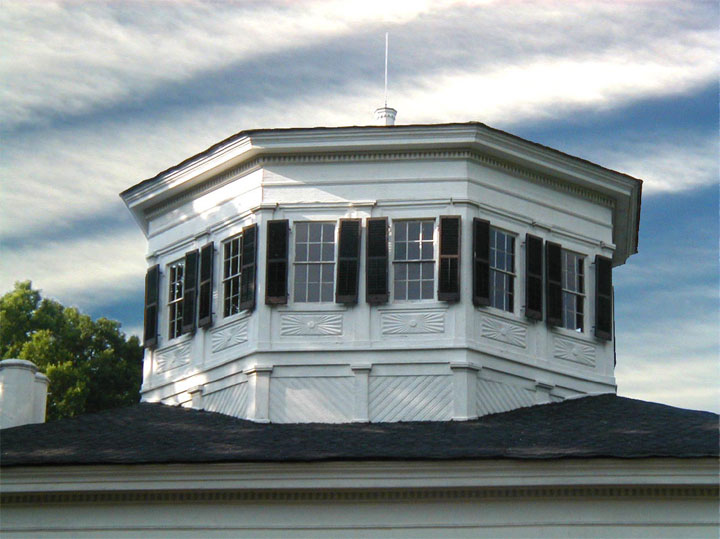
During its 50 years of vacancy, the house played host to birds, squirrels, and other animals. Hunters camped out, and Mississippi State University fraternities held their parties and initiations there. The cupola (above) was home to a beehive that weighed over two hundred pounds.
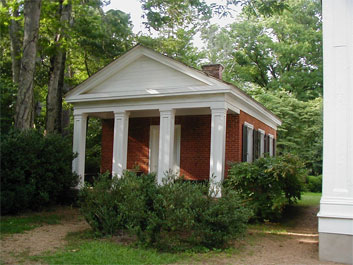
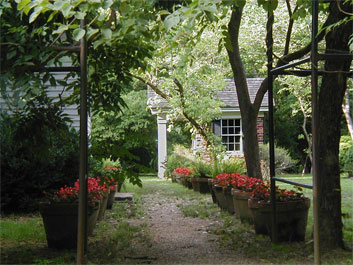
To the left of the house is the brick plantation office that was built around 1842, about 15 years before the mansion itself was constructed.
To the right of the house can be found the new kitchen that was built by the Snows to replace the original one, in ruins by the 1920s.
Below is a photograph taken by James Butters on June 11, 1936 for the Historic American Buildings Survey. This was the state of the house thirty-three years after the Young family had closed the doors for the last time in 1913 and twenty-six years before Donna and Robert Snow fell in love with Waverley Mansion in 1962.
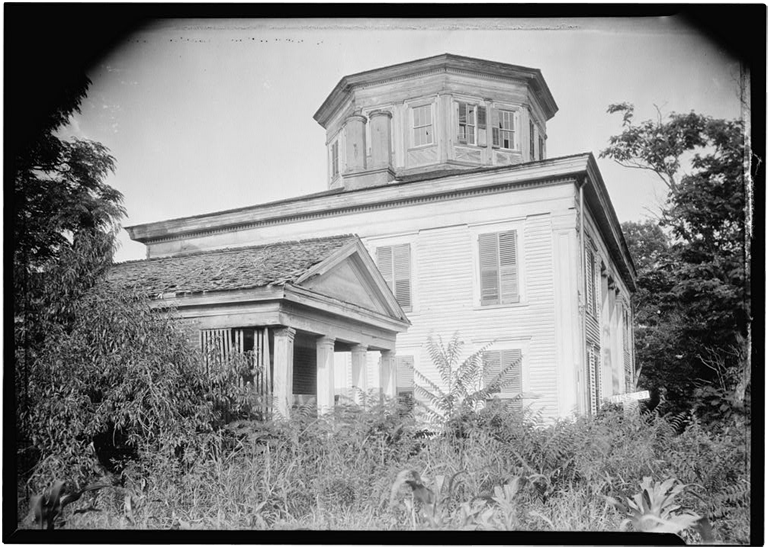
Waverley Plantation Mansion is located off Highway 50 between West Point and Columbus, Mississippi. Call 662-494-1399 for tour information.
COPYRIGHT © 2001 THE NEW SOUTHERN VIEW EZINE | 1/28/12
